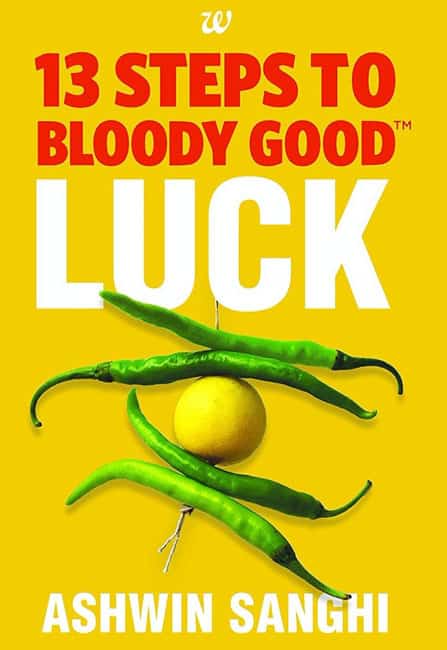SUBJECT: 3.5/5
WRITING STYLE: 3.5/5
RELEVANCE: 4/5
ENTERTAINMENT QUOTIENT: 3.5/5
Yes! You will be surprised. We all have known Ashwin Sanghi as the bestselling author of the three mythological thrillers – The Rozabal Line, The Krishna Key and Chanakya’s Chant and of the murder mystery Private India which he co-authored along with the super hit author James Patterson.
So Ashwin has written a non-fiction book? Yes! He has and he has surely done a great job out of it.
Often in life people are found blaming their misfortunes and other’s fortunes on luck. But is it really so?
Is luck only a matter of destiny; written in the stars and none too affected by anything which we do or say?
Well, if that is what you believe then Ashwin Sanghi is here to prove you wrong and he will help you realise that good luck can be attracted and that we ourselves can be trained to become lucky.
Sanghi in his short and sweet book (all of 148 pages), “13 Steps to Bloody Good Luck”, lists out the thirteen (yes, thirteen!) steps to having bloody good luck.
He teaches how you to raise, recognise and respond to the various opportunities that life throws in your direction and how with the help of right approach and right attitude one can easily harvest these opportunities to turn them into success factors.
Following the two chapters on the 3 Rs and the 2 As, he moves on to list the 13 steps to bloody good luck.
Writing a non-fiction and especially a self-help book is not an easy task, for the attention span is often less and the retention capacity usually low thereby making the author’s job of holding the reader’s interest all the more difficult.
But Sanghi has made really good use of personal anecdotes and famous examples to drive home his point and make the reader’s journey interesting. I really liked the way the book feels like a seamless read.
Another thing to be noticed here is the use of number thirteen. Ashwin mocks traditionalists in the face by titling his book the “13 Steps to Bloody Good Luck” because thirteen traditionally has always been associated with adversity and ill-luck.
Sanghi, by laying out exactly thirteen steps, very correctly and effectively communicates that good luck can be attracted, manufactured, and even modified to suit one’s need and help one tread the path of success.
All in all, the book is an excellent read – crisp, informative and inspirational and I would, therefore, recommend it to all my readers.
